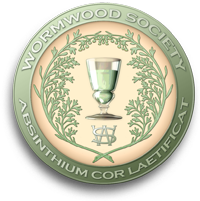Absinthe - A Review
The alcoholic beverage absinthe is recently experiencing a revival after a yearlong prohibition. This review article provides information on
Absinthe - A Review
The alcoholic beverage absinthe is recently experiencing a revival after a yearlong prohibition. This review article provides information on all aspects of this bitter spirit and its major components, especially wormwood (Artemisia absinthium L.), which contains the toxic monoterpene thujone. Over 100 references on historic and current literature are provided. The topics comprise the history of the alcoholic drink starting from its invention in the eighteenth century. Historical and modern recipes are discussed in the context of different quality categories and possibilities to reduce the content of thujone are given.
The analytical techniques used to verify compliance with the maximum limit of thujone as well as further possibilities for quality control of absinthe are discussed. The toxicology of absinthe is reviewed with regard to the cause of a syndrome called âabsinthism,â which was described after chronic abuse of the spirit in the nineteenth century. Finally, a food regulatory and food chemical evaluation is provided and minimum requirements for absinthe are suggested.
Absinthe should have a recognizable wormwood flavor and after dilution with water the characteristic clouding should arise (louche-effect). Products, which are advertized as being of premium grade should be made by distillation, should have an alcoholic strength of at least 45%vol, and should not contain artificial dye.
Published in Critical Reviews in Food Science and Nutrition, Volume 46, Issue 5 June 2006 , pages 365 - 377
The full article may be purchased here.
